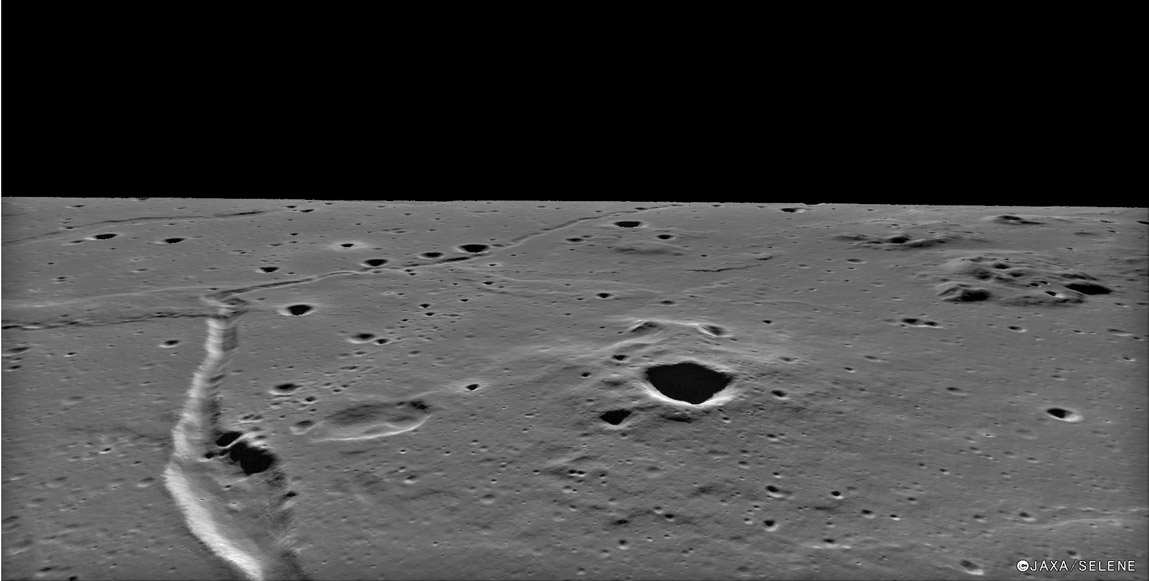January 24, 2019
Hills, Troughs And a Collapse
Originally published November 15, 2009

image from JAXA-Kaguya Image Gallery
Looking like a superb Chesley Bonestell painting, this oblique view of Marius Hills rilles is a perspective view constructed from real data. Using Terrain Camera stereo images, Kaguya scientists created a digital terrain map, and then an image was draped over it, allowing computer views from any angle. At left front is a Cobra Head-like depression that was the source vent for a barely sinuous rille that deposited the flat-lying lavas that surround the older rough domes such as the one at front right. Between the rille vent and dome is an odd gentle-sloped depression with a central hill, conceivably an impact crater overflown by lavas, but more likely a volcanic collapse crater. The shadow-filled crater near the summit of the dome appears to be an impact crater, as are most of the shadow-filled craters in the scene. At left center the rille bends sharply where it intersects a mare ridge. From this view it is possible that the ridge formed after the rille, but high resolution Orbiter V images suggests that the rille cuts the ridge. But it is hard to understand how a rille - which always flows downhill - could cut through the higher ridge, so I suppose that the ridge has uplifted the rille. I almost believe that, but I bet that the ridge was there first and it somehow diverted the flowing lava and its rille. What do you think?
Chuck Wood
Related Links
Rükl plate 29
One of the vertical view Kaguya images that the stereo map was made from.
Yesterday's LPOD: Buckets of Water On the Moon
Tomorrow's LPOD: Long Radials
COMMENTS?
Register, Log in, and join in the comments.



